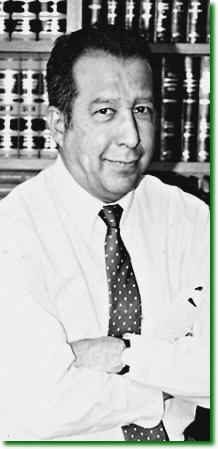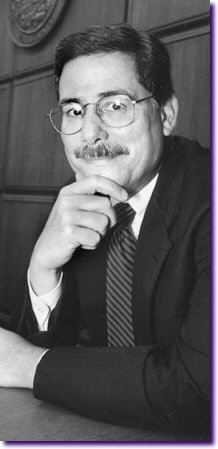Tuesday, August 26, 2008
Page 7
PERSPECTIVES (Column)
Times Change...Superior Court’s PJ Isn’t a Sexist; Appointment of Women Isn’t Viewed as Risky
By ROGER M. GRACE
“Change is inevitable. Change is constant.” So said British Prime Minister Benjamin Disraeli.
One change for the better—decidedly for the better—is the outlook of the administration of the Los Angeles Superior Court when it comes to assignments...in particular, assignments of women.
Sixteen years ago, the court was led by a man who didn’t want to “take chances” by putting female members of the court in leadership positions.
![]()
Here’s what this column pointed out on Feb. 20, 1992:
“The Los Angeles Superior Court has 16 supervising judges, plus a presiding judge of the Juvenile Court, each picked by Presiding Judge Ricardo Torres. Notice anything lopsided in the assignments? None is a woman. There are 35 Superior Court committees (in addition to the Executive Committee) the chairpersons of which are chosen by the PJ. Guess what? Not one committee is headed by a female. Five of the committees have vice chairpersons. Nary a one is female. This isn’t a plea for tokenism. With 43 female members of the court, can Torres seriously contend that not a single one of them is qualified for a leadership role?”
Well, he did contend just that. It wasn’t in an interview with this newspaper. He wasn’t speaking to us. He did talk with B.J. Palermo, whose article in the June, 1992 issue of California Lawyer magazine reports:
“Some judicial critics say Torres discriminates against women and in favor of Latinos. They note that none of his court’s 43 women are supervising judges or head key committees. ‘You don’t take chances,’ says Torres, defending himself. ‘When you sit here and run the court, you know what you have in every district and you know what you need. You’ve got to put in the person who’s going to be respected by the judges and not give you problems. I’m not saying that women can’t be respected, but most of our women are newer on the bench.”
|
|
|
|
|
|
TORRES Didn't want to "take chances" by appointing women as supervising judges. |
CZULEGER Says "things have in fact changed from past years so positively.” |
Then-Los Angeles Superior Court Judge Martha Goldin (now retired)—who had headed the Probate Department during the two-year period before Torres became PJ—is quoted in a June 12, 1992 news article in MetNews as disputing Torres’ latter statement, remarking:
“There are quite few senior women on the bench, all of whom are quite competent to serve as committee chairs.”
My column of June 17, 1992, comments:
“Goldin is right.
“Of the court’s 42 female members (it dropped from 43 when Judge Dana Henry retired), exactly half have been on the court for five years or more. Two others will mark the five-year point next month, and one will reach that point in October.
“And 12 women judges have been there for more than a decade.
“Torres’ assertion that ‘most of our women are newer on the bench’ is flat out wrong.
“His refusal to appoint any of them to positions of authority is flat out sexist.”
![]()
The Sept. 7, 1992 edition of the Daily News quotes Torres as saying that he was attempting to “develop” some women for leadership roles.
In November, 1992, incoming presiding judge Robert Mallano encountered no difficulty in finding three women suited for posts as supervising judges: Emily Stevens, Judith Ashmann (now Court of Appeal Justice Judith Ashmann-Gerst), and Ramona Godoy Perez (later a member of the Court of Appeal, now deceased). Mallano, now a Court of Appeal presiding justice, in December, 1992, appointed six women to head court committees.
Somehow, there was not a common perception that Mallano was taking a “chance” in making these selections or that those whom he picked were now fit only because of Torres’ grooming.
![]()
The current presiding judge, J. Stephen Czuleger, displays no Torresian propensities.
There are now 17 supervising judges of departments and branches, along with the presiding judge of the Juvenile Court. Of those 18, seven judges-in-charge are women. What is more meaningful, however, is how Czuleger has filled the key (non-branch) posts. There are eight of them—and six are filled by women…as follows:
Family Law Department (Marjorie S. Steinberg); Dependency Courts (Margaret S. Henry); Probate (Aviva Bobb); Stanley Mosk Courthouse (Lee Edmon); Complex Litigation (Carolyn Kuhl); and Appellate Division (Patti Jo McKay).
McKay is technically not a Czuleger appointee since the chief justice designates Appellate Division members. However, he traditionally acts based on the recommendations of the presiding judge.
The other plumb assignments, held by males, are Criminal (David Wesley) and Juvenile (Michael Nash). In the Criminal Department, Charlaine Olmedo is assistant supervising judge.
In the branches, Patricia Schnegg is supervising judge of the Northwest District and Candace J. Beason has been assigned as chief of the Northeast District effective Sept. 15. There are several female site judges and assistant supervising judges.
Eleven women head major committees. Notably, the Personnel and Budget Committee is chaired by Linda K. Lefkowitz. That’s the group with the most clout outside of the policy-setting Executive Committee which is, by court rule, headed by the presiding judge, with its members elected by judges.
Committee chairs include some of the supervising judges: Edmon, Civil and Small Claims Committee; Bobb, Probate Committee; Steinberg, Family Law Committee; and Schnegg, Jurors Committee.
Other committee chairs are Helen I. Bendix, Alternate Dispute Resolution Committee; Anita H. Dymant, Domestic Violence Committee; Alice C. Hill, Education Committee; Amy D. Hogue, Media Committee; Susan Bryant-Deason, Research Attorney Committee; and Emilie H. Elias, Special Events Committee.
![]()
Why has Czuleger chosen so many women for top leadership spots? Is it that his wife, mystery novelist Rebecca Forster, would otherwise have taken it out on him by penning, “Murder of a Presiding Judge”? (She’s already written a book in which the victim is a California Supreme Court justice.)
Actually, Czuleger’s appointment of women to most of the highly sought-after posts was not pursuant to a design. He responds to an inquiry from this column by saying:
“I did not realize we had so many women as supervising judges of our downtown operations until a couple of women lawyers in Northern California brought it to my attention. Clearly, each of the judges that I selected for these supervising roles got their position as a result of their quality rather than their gender. It is simply nice to now realize that things have in fact changed from past years so positively.”
In fact, “so positively” have they changed that it’s generally anticipated that in January, Edmon will assume the post of assistant presiding judge, and two years later, will become the court’s first female presiding judge. (The period for declaring candidacies for presiding judge and assistant presiding judge begins at noon tomorrow and ends at noon two weeks later. Edmon could draw opposition as, theoretically, could the current assistant presiding judge, Charles “Tim” McCoy, who will be running for presiding judge. But opposition is unlikely.)
It’s clear that Czuleger is not appointing women simply for the sake of appointing women. I know of nothing negative about any of his appointees, and have heard much of a positive nature about several of them.
There are, certainly, some female goofballs on the court—names of two of them come readily to mind—and they haven’t been put in leadership roles.
![]()
![]()
![]()
FOOTNOTE: Czuleger, whom this newspaper in 2005 designated as a “Person of the Year” while he was assistant presiding judge, is a man for whom I have considerable regard. He can be delightfully flip and humorous, but is serious-minded when it comes to carrying out objectives. He is principled and has guts.
We have a chief justice in California (our “Person of the Year” in 1996) who is personable, intelligent, was an excellent trial judge and appellate jurist, and was seemingly an ideal appointee to the state’s top judicial post in 1991. But when Ronald M. George gained the power of the office of chief justice, he found that he liked power…hell, he was exhilarated by it. Through his engineering, local courts became state courts; all courts became his courts.
Many judges throughout the state are intimidated by George. Czuleger isn’t, and has shown that.
“Superior” courts are, with the abolishment of city courts, police courts, justice courts and, most recently, municipal courts, not superior, anymore; there are no lower courts. But they are, as the sole trial court in each county, hardly lowly courts. Superior courts are not, and it is to be hoped will never become, wholly owned subsidiaries of the California Supreme Court, with management of their day-to-day affairs dictated by the chief justice. Presiding judges surely should not be reduced to the role of low-level managers in a company run by the “chief”…nor should they be, as George wants, appointed by him.
Czuleger has earned the esteem of colleagues for not kowtowing to the chief justice. But is there sufficient resolve among this county’s judges to fend off efforts in the future to re-wire the system so that the Los Angeles Superior Court is run from San Francisco?
On TV’s “Star Trek, the Next Generation,” species from far-flung planets…after having been admonished that “resistance is futile”…submitted to assimilation, without a fight, into The Borg, becoming drones. Will Los Angeles Superior Court judges similarly acquiesce?
Yes, judges of that court have been known to cower. Members of it were much concerned by over-reaching tactics on the part of Torres in 1991, but did not speak out, and there was no effort to unseat him when he sought a second term. (At the time, the Superior Court’s rules provided for one-year terms, though the tradition was that the PJ would be reelected without opposition to a second one-year term. Now, two-year terms are mandated by state rule because that’s how “King George”—as many denominate the chief justice—wants it.)
Most Los Angeles Superior Court judges in 2000 did not desire unification with the county’s municipal courts, as evidenced by their having previously voted against it. But George, who was for it, threatened a withholding of funds if they refused, while pledging that he would lead them to the land of milk and honey if they obeyed. Convinced that resistance was futile, they capitulated. Note might be taken that the court has not received the promised milk and honey.
In these days of expediency, it’s refreshing to see someone like Czuleger who will fight The Borg.
Copyright 2008, Metropolitan News Company

